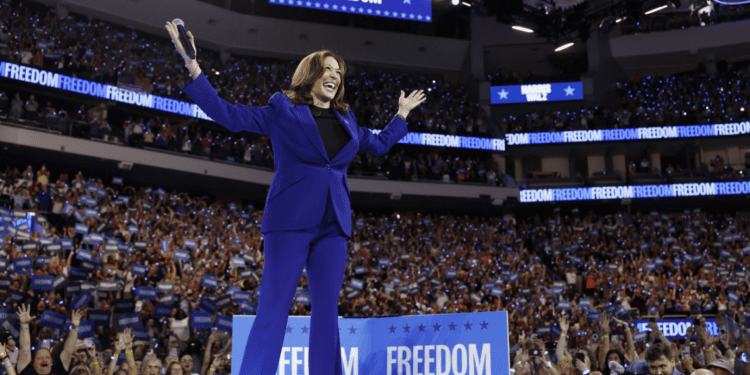Why Kamala’s Eye is on Immediate Solutions
Vice President Kamala Harris isn’t championing the Biden administration’s sweeping, slow-burn policies on the campaign trail. Instead, she’s laser-focused on quick fixes — policies that promise to lower costs and deliver immediate relief. It’s a calculated move in her campaign strategy, one that banks on voters’ desire for instant results.
The Allure of the Quick Fix in Kamala Harris’s Campaign Strategy
The Biden administration launched grand initiatives to boost American manufacturing and green energy, aiming for long-term economic resilience. But these are slow-moving beasts, and the benefits aren’t immediately tangible to the average voter. Harris knows this. That’s why her campaign strategy zeroes in on policies that sound like they can make a difference now: tax breaks for families and startups, down payment assistance, and penalties for price-gouging grocery stores.
Kamala Harris’s Campaign Strategy: Speaking to Voters’ Immediate Needs
“People don’t want to hear about step two or three if you’re not focused on bringing down their prices now,” an adviser to Harris explained. With unemployment at a low 4.1 percent, voters are less worried about jobs and more concerned about the rising cost of living. Harris’s campaign strategy taps into this sentiment, offering quick solutions that resonate with voters’ immediate needs.
The Risks of Overlooking Long-Term Goals in Kamala Harris’s Campaign Strategy
But here’s the catch: not everything can — or should — be fixed quickly. While immediate relief is appealing, long-term investments in manufacturing and services are crucial for sustained economic health. Critics argue that by not emphasizing these structural goals, Harris may miss an opportunity to educate voters on the importance of patience and long-term planning.
Is Kamala Harris’s Campaign Strategy Missing the Bigger Picture?
Harris has touched on supply-side policies and continues to support building three million new homes — a significant part of her platform. Yet, these long-term goals aren’t the centerpiece of her campaign strategy. Instead, she’s opting for immediacy, perhaps at the expense of a broader vision that could set her apart, especially in swing states where working-class voters might be swayed by a commitment to manufacturing and industrial growth.
The Political Calculus Behind Kamala Harris’s Campaign Strategy
Her approach isn’t without logic. By focusing on immediate cost-lowering measures, Harris aims to connect with voters on issues they feel every day. However, some Democrats believe that the party should also champion the big-picture goals of building and creating — a sentiment echoed by figures like Senator Brian Schatz, who advocates for embracing large-scale projects and infrastructure.
The High Stakes of Kamala Harris’s Campaign Strategy
There’s no guarantee that the quick fixes Harris proposes will yield the desired results, just as the long-term investments of the current administration are yet to fully prove their worth. But in the high-stakes game of politics, Harris’s campaign strategy is a gamble on what she believes voters want to hear now.
By honing in on immediate solutions, Kamala Harris’s campaign strategy aims to meet voters where they are—but only time will tell if this approach will pay off in the long run.Find out how these changes will impact the U.S. job market in our article: “How the 2024 U.S. Election Will Impact the Job Market: A Forecast for American Workers.”


